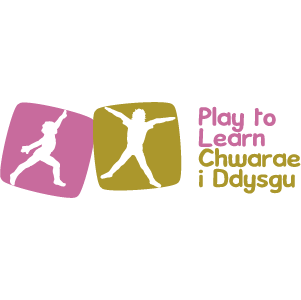
Instructions
Hopping is a continuous skill that involves taking off and landing on the same foot. Hopping may occur on the spot or travelling. Hopping is an important feature in basketball lay up and the triple jump.
- Lift one leg, bending knee
- Bend the knee of the supporting leg
- Drive elbows backwards
- Push from the ball of the foot, swinging arms forwards and upwards
- Land softly on the ball of the foot and take off, bending at the knee
- Keep the head up and look forwards

Safety
Ensure…
- children do not perform too many consecutive hops
- children bend their knees on landing
- children do not land on hoops
- the surface is safe/appropriate
Opportunity to develop
- Co-ordination
- Control
- Strength
Physical Development Area of Learning
- contributes to ‘Personal’ and ‘Adventurous and physical play’ skills sections
If you see
| Observation | Likely Cause | Solution |
|---|---|---|
| Hops flat footed | Lands on heels rather than toes. Steps onto the toe. | Take off from ball of foot, bend knees, travel light footed. Practise activities that develop stepping and extending/reaching off tiptoes. |
| ‘Chicken wings’ or arms used in opposition | Both arms are moving forward or backward together. Arms may be up by their shoulders. | Arms assist with movement. Drive with both arms as hop onto the leg. Practise swinging action of arms. |
| Momentary flight | Hopping leg is far too straight and the non-hopping leg is passive and does not swing through | Step onto hopping foot and drive up onto toes. Use the non-support leg to drive up with the knee. |
| Leg and arm action not synchronised | Balance lost after a couple of hop steps. The support leg tends to be behind the body. | Ensure that the body does not lean forward too much and the body gets too advanced on the landing foot. See if the child can hop and spot the landings. |
| Non-hopping leg constantly hits the floor | Not aware of non-hopping leg | Non-hopping leg needs to be held up off the floor |
| No distance or height achieved by the hop | Lack of arm action | Practise arm action |
Can you see?
- the child’s supporting leg bending on landing and then straightening to push off?
- the child taking off and landing on the front foot?
- the child’s swinging leg moving in rhythm with the hopping leg?
- the child hopping successfully on both legs?
- the child’s head and trunk stable and eyes forward?
- the child’s arms bent and assisting with balance?
- the child’s arms both moving in opposition to assist with forward movement and balance?
- the child hopping over a short distance?
-
Mostly No
- Stand on one foot, lift heel off floor.
- Stand on one foot and as heel is lifted off floor, swing arms to reach high.
- Step onto the hopping foot. Step onto tip toes and reach up high. Use the other leg to give extra height.
- Step onto the hopping foot, bend at the knee, pushing off and reaching up onto the toes.
- Step onto the hopping foot and swing the knee of the other leg forward.
- Step onto the hopping foot, bend, reach up and do a little jump at the end of it.
- Bounce up and down with small jumps like a bouncing ball. Lean to one side (right) and do small bounces on one foot and then the other by leaning the other way.
- Step onto the hopping foot and swing the knee of the other leg forward.
- Step onto the hopping foot, swing the knee of the other leg forward and drive both arms upwards.
-
Yes and No
- Hop over a set of ropes, chalk markings, cones.
- Hop within a hoop or on a coloured spot. Try and stay on the spot or within the hoop.
- Step-hop routine to the beat of a musical instrument. Step, hop. Step-hop moving around the room.
- Hop across a rope / chalk line / cone and land on the same foot.
- Step onto the hopping foot, swing the other leg forward, drive both arms upwards and jump up.
- Increase number of hops.
-
Mostly Yes
- Run and hop, jump and hop
- Consecutive hops, being mindful of safety
- Hop over larger obstacles, cones, ropes, toys
- Hop and change direction
- Hop on either leg
- Hopping patterns
-
Challenge
- Hop in different directions and at different speeds, then in response to a range of cues
- Hop forwards, backwards and sideways remain still on landing, use left and right variations
- Hop in different ways by responding to a range of cues, for example lifting knee in hop, hopping from spot to spot, etc.


